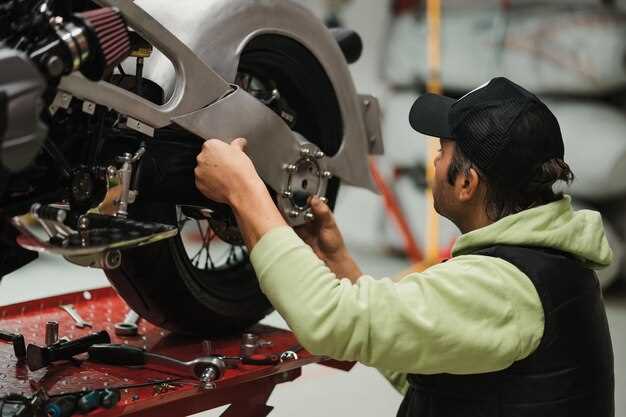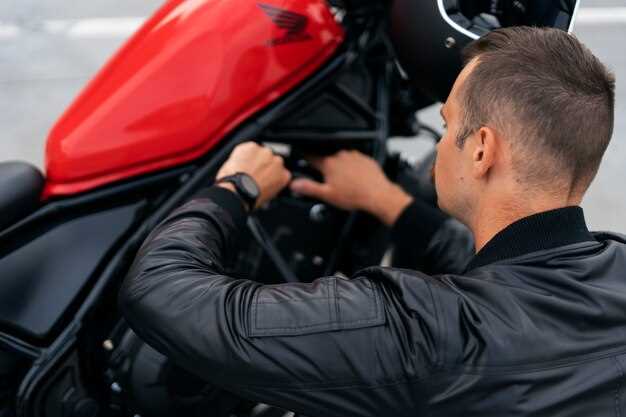
Ensuring optimal performance in your sportbike hinges significantly on the health of its valves and compression system. These components work in tandem to generate the powerful thrust that defines a sportbike’s exhilarating ride. Regular inspection and maintenance of valves and compression not only enhance engine efficiency but also extend the life of your motorcycle.
In this guide, we will delve into the essential steps to effectively check the condition of your sportbike’s valves. We’ll cover how to measure compression, evaluate valve clearances, and provide tips on what to look for during this critical process. Understanding these elements is vital for any rider wanting to maintain peak power and performance in their machine.
Arming yourself with the right tools and knowledge allows you to proactively address potential issues before they escalate. Let’s explore how you can ensure your sportbike is running at its full potential through comprehensive checks of the valves and compression.
Understanding Valve Clearance and Its Impact on Performance

Valve clearance, also known as valve lash, is a critical aspect of engine performance that directly influences power output and overall efficiency. It refers to the small gap between the valve stem and the rocker arm or camshaft. If this gap is not within the manufacturer’s specified range, it can lead to significant issues in engine operation.
Properly adjusted valve clearance ensures that valves open and close at the right times, allowing optimal airflow into and out of the combustion chamber. When the clearance is too tight, valves may not fully close, leading to a loss of compression and a decrease in power. Conversely, excessive clearance can cause a noisy engine and erratic performance, as the valves may open too late or not open fully.
To check valve clearance, mechanics typically use feeler gauges to measure the gap while the engine is cold. Regular checks and adjustments are essential to maintain engine performance and prevent premature wear of the valve train components and camshaft. An engine operating with improper valve clearance may run inefficiently, thus affecting overall power output.
In summary, understanding and maintaining proper valve clearance is vital for achieving maximum performance from your sportbike. Regular checks should be incorporated into your maintenance routine, ensuring that your bike delivers the power and responsiveness expected from a high-performance machine.
Step-by-Step Procedure for Checking Valve Clearances
To check the valve clearances on your sportbike, start by gathering the necessary tools including a feeler gauge, a socket set, and a torque wrench. Ensure that you have a service manual for your specific bike model, as it will provide the correct specifications for valve clearances.
Begin by removing the necessary bodywork to access the engine. This may include fairings, seat, and tank. Next, locate the valve cover which is typically held in place by bolts. Carefully remove these bolts with the socket set and gently lift off the valve cover, taking care not to damage any gaskets.
Once the valve cover is removed, rotate the engine to the correct position. For most sportbikes, this means setting the engine at Top Dead Center (TDC) on the compression stroke for the cylinder you will be checking. You can confirm this by aligning the timing marks on the crankshaft and camshaft.
Now, using the feeler gauge, check the clearance between the camshaft and the valve lifter. Insert the appropriate feeler gauge size, as specified in the service manual, for each valve. If the gauge fits snugly, the valve clearance is acceptable. If it is too tight or too loose, adjustments will be necessary.
To adjust the clearance, you’ll need to loosen the locknut on the adjusting screw. Use a wrench to turn the screw and achieve the correct gap with the feeler gauge. Once the correct setting is achieved, hold the screw in place and tighten the locknut carefully to avoid altering the valve clearance.
Repeat this process for all the valves in the cylinder head. After checking and adjusting, replace the valve cover with a new gasket if required, ensuring all bolts are tightened to the manufacturer’s specifications using the torque wrench. Finally, reassemble any removed bodywork and perform a test run to verify that the adjustments have been successful.
Methods for Assessing Compression and Diagnosing Engine Health

Assessing engine compression and diagnosing its health is essential for maintaining the performance and longevity of a sportbike. Properly functioning valves and optimal compression levels are crucial for maximizing power output. Here are effective methods to evaluate these parameters:
-
Compression Test:
This method measures the pressure within each cylinder during the compression stroke. Follow these steps:
- Remove the spark plugs to prevent compression release.
- Insert a compression gauge into the spark plug hole.
- Open the throttle fully and crank the engine several times.
- Record the maximum reading from the gauge.
- Compare the results across all cylinders; significant differences may indicate valve issues or wear.
-
Leak-Down Test:
This test identifies where compression loss occurs, focusing on valves, piston rings, and gaskets.
- Bring the cylinder to top dead center (TDC).
- Attach a leak-down tester and apply compressed air.
- Monitor the percentage of leakage; values above 10-15% may indicate engine problems.
- Listen for air escaping through the exhaust, intake, or crankcase to pinpoint leakage sources.
-
Visual Inspection of Valves:
A physical examination of the valve train can reveal numerous issues affecting compression and power.
- Inspect valve seats for wear and damage.
- Check valve springs for proper tension and signs of fatigue.
- Examine camshaft lobes for wear that may affect valve timing.
- Look for carbon buildup on valves, which can hinder sealing.
-
Oil Consumption Check:
High oil consumption may indicate valve seal issues or worn piston rings, affecting engine health.
- Monitor oil levels between changes.
- Inspect for blue smoke during startup, which may suggest worn valve guides or seals.
Regularly performing these assessments ensures that the engine maintains optimal power and reliability, helping sportbike riders enjoy a safer and more powerful riding experience.
